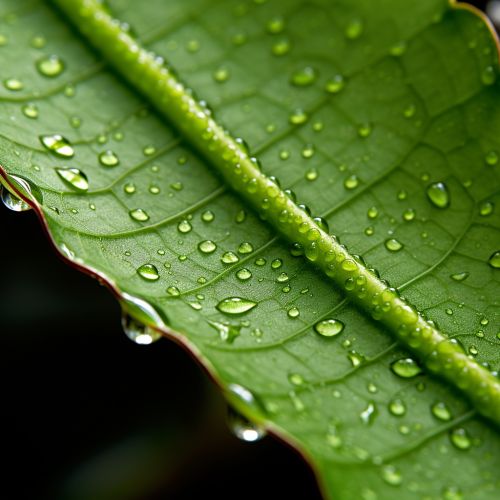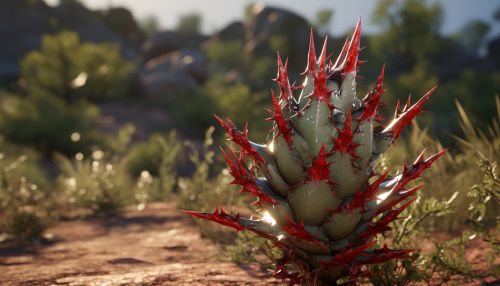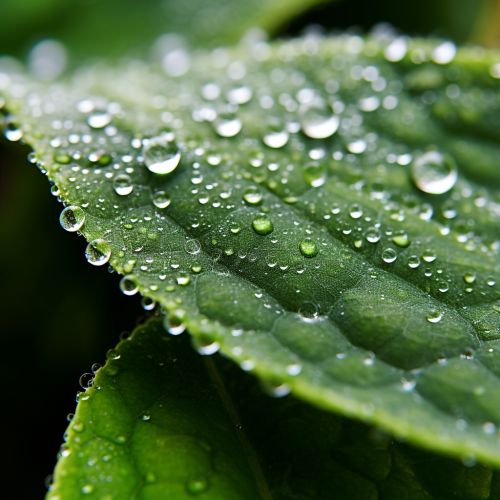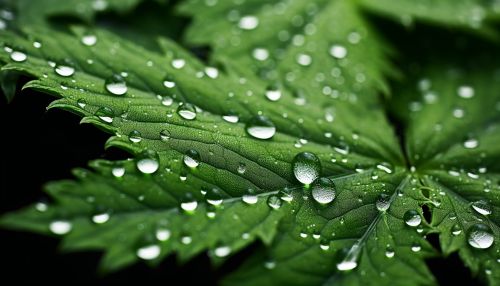Plant defense against herbivory
Introduction
Plants, as sessile organisms, have developed a myriad of strategies to defend themselves against herbivores. These strategies, collectively referred to as plant defense against herbivory, are a significant aspect of the interaction between plants and their environment. They include physical adaptations, chemical defenses, and the recruitment of other organisms to deter herbivores.


Physical Defenses
Physical defenses are the first line of defense against herbivores. These can include structural features such as thorns, spines, and trichomes, as well as tougher or thicker tissues that make the plant difficult to consume.
Thorns and Spines
Thorns and spines are sharp structures that can deter herbivores by causing physical harm. They are typically modified leaves, stems, or parts of leaves.


Trichomes
Trichomes are hair-like structures on the plant surface that can deter herbivores by causing irritation or by physically obstructing smaller herbivores. Some trichomes may also contain toxic or deterrent chemicals.


Tougher Tissues
Plants may also develop tougher tissues, such as a thicker cuticle or bark, or tissues with high lignin or silica content. These adaptations make the plant more difficult to consume or digest.


Chemical Defenses
Chemical defenses are a crucial aspect of plant defense against herbivory. These can include secondary metabolites that are toxic, deterrent, or reduce the nutritional value of the plant.
Toxic Compounds
Plants produce a wide variety of toxic compounds to deter herbivores. These can include alkaloids, terpenoids, and cyanogenic glycosides, among others.
Deterrent Compounds
In addition to toxic compounds, plants also produce compounds that deter herbivores by making the plant unpalatable. These can include bitter-tasting compounds such as tannins, or compounds that interfere with the herbivore's sense of taste or smell.


Anti-nutritional Compounds
Plants can also produce compounds that reduce the nutritional value of the plant for herbivores. These can include compounds that bind to nutrients and make them unavailable, or compounds that interfere with the herbivore's digestive enzymes.
Recruitment of Other Organisms
Plants can also defend themselves against herbivores by recruiting other organisms. This can include the recruitment of predatory or parasitic organisms that attack the herbivores, or mutualistic organisms that provide defense in exchange for resources.
Predatory and Parasitic Organisms
Plants can recruit predatory or parasitic organisms by releasing volatile compounds that attract these organisms. This strategy is often employed in response to herbivore attack, and can be highly effective in reducing herbivore damage.


Mutualistic Organisms
Plants can also form mutualistic relationships with other organisms that provide defense. This can include ants that defend the plant in exchange for nectar, or endophytic fungi that produce toxic compounds.
Conclusion
Plant defense against herbivory is a complex and multifaceted process, involving a combination of physical adaptations, chemical defenses, and the recruitment of other organisms. Understanding these defenses can provide insights into plant-herbivore interactions and the evolution of these interactions over time.
